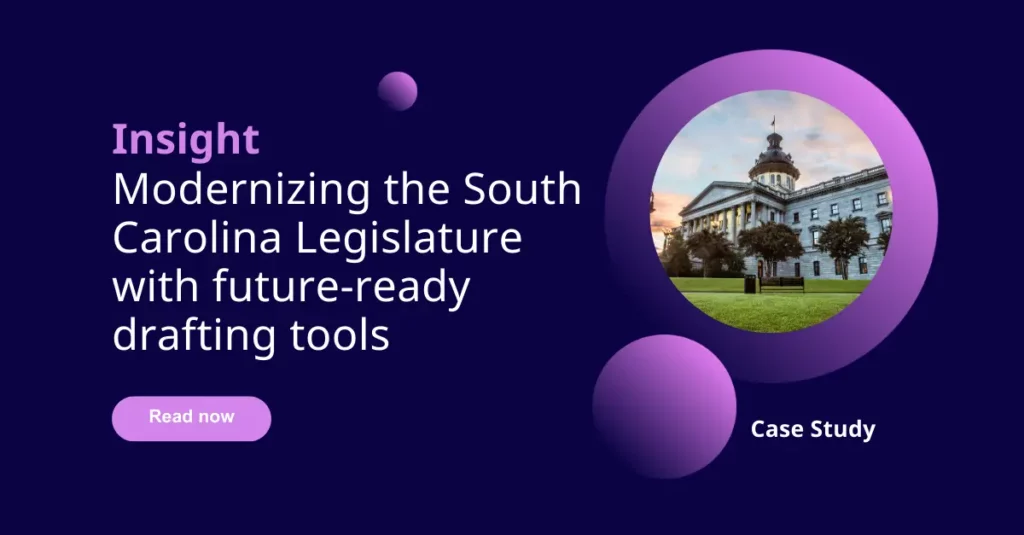At the 2024 National Conference of State Legislatures (NCSL) Legislative Summit, Jennifer Pahlka, founder of Code for America, put an intriguing analogy to the audience at the opening general session: consider AI an intern. It’s important, said Pahlka, to compare HABA – what humans are better at – with MABA – what machines are better at. Her remarks reflect a growing conversation around AI’s potential in legislative processes.
At our Legislative Management Technology Summit last year, we covered the expanding use of AI across sectors like healthcare, finance, and retail. We addressed issues such as trust, bias, job displacement, and data privacy. We also looked at implementation patterns and principles such as keeping the human in the loop.
This year, we shifted our focus to explore AI’s roles in overcoming specific legislative challenges.
Where could AI make a difference?
Drafting auxiliary or supporting legislative documents can be frustrating and time-consuming, requiring research and resources that could be better spent elsewhere.
One area where AI could assist is in the creation of early drafts of non-legally sensitive documents. It can prepare early drafts of documents that are not legally sensitive (i.e., not a bill) which can then be reviewed by the expert in the loop. This approach vastly reduces the time required by staff to prepare documents and allows them to redirect their efforts to more strategic tasks.
AI in action: Legislative Drafting Use Cases
Example one: Resolution drafting
The LWB 360® solution currently implements a template-based system for resolution drafting. The templates contain boilerplate text for several different types of resolutions such as congratulatory, road naming, or sympathy resolutions, with placeholders for specific details.
This approach reduces the time it takes to draft resolutions from scratch. AI lets us take this one step further, allowing the drafting attorney to select the resolution type and feed it pertinent information. For example, a congratulatory resolution for a sports team may require details such as:
- The sport
- School name
- Competition
- Coach’s name

Example two: Bill summaries
After a draft has been introduced, bill summaries are published for each iteration of a bill. The creator must read through all changes to a bill and summarize it in layman’s terms. Publishing times are dictated by each state’s legislative rules.
An AI solution could condense lengthy legislative texts into concise summaries, extracting key points and essential information. This saves considerable time by providing an easily digestible and editable overview of the bill.
Example three: Indexing
Example four: Suggestive amendments
One of the perhaps more theoretical applications of AI in legislative drafting is suggestive amendments. Often required urgently with little notice, amendments to large documents may require many changes (e.g., fee or age limit). Human error can lead to overlooked edits.
AI could assist by drawing from a library of past amendments to generate templates, adapting them to the specific needs of the current proposal.
It’s important to compare what humans are better at with what machines are better at.
Enhancing the working lives of staff
The concept of AI as a legislative intern aligns with our vision at Propylon and is an elegant way to conceptualize the relationship between humans and machines as it should be.
By including AI in a controlled environment, as outlined in the above examples, legislative staff can accelerate the creation of time-sensitive, critical documents. In this way, AI can also be used in the creation of supporting documents such as cover sheets and budget summaries. AI can create the first pass at documents/actions, while the expert in the loop validates the final output. This collaboration between human judgment and machine efficiency is ultimately about enhancing the working lives of those who shape our laws, allowing them to focus on what they do best: crafting legislation.

